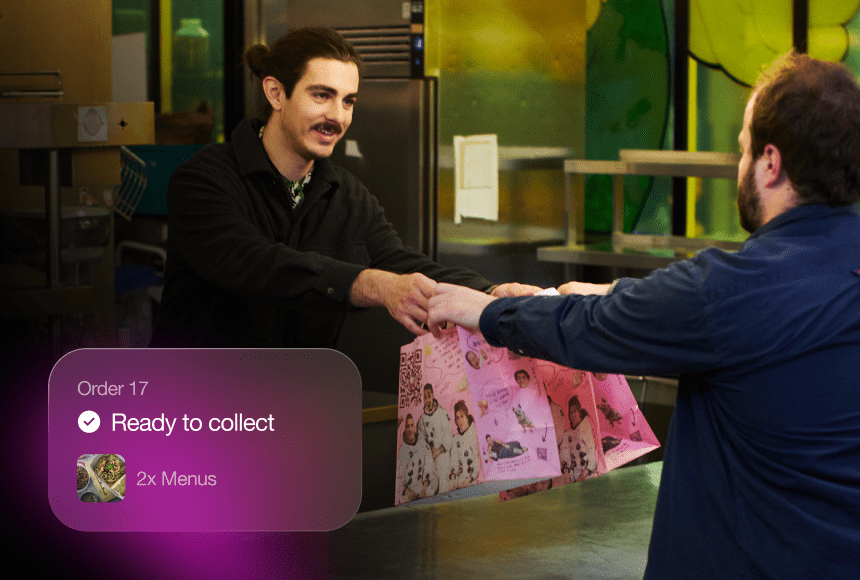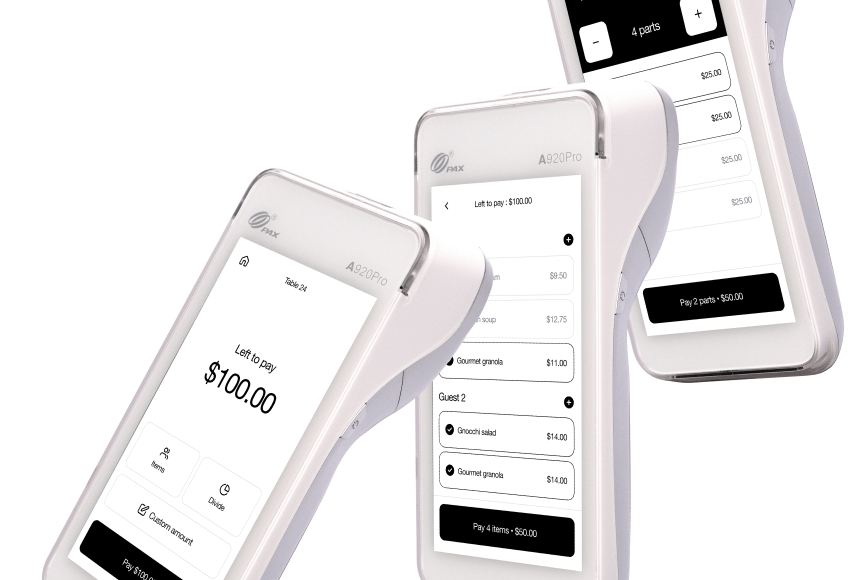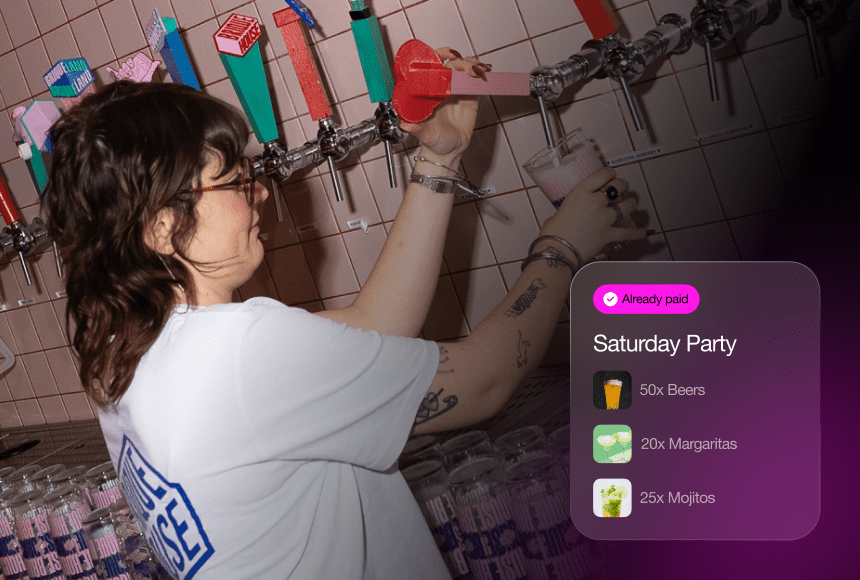
Avoid These 3 Click & Collect Pitfalls and Keep Guests Coming Back
Has Your Takeout Strategy Lost Its Spark?
Running a restaurant in today’s fast-paced climate requires more than great food. In the U.S., diners have come to expect convenient, streamlined ways of enjoying their favorite meals at home—particularly through Click & Collect services (also known as curbside or pickup orders). If that service isn’t up to par, you risk losing loyal patrons. According to the National Restaurant Association’s consumer research, restaurant delivery and carryout options remain top growth drivers for many businesses. But if the experience is disjointed, customers can quickly take their appetites (and wallets) elsewhere.
Because competition is fierce, offering Click & Collect has become less a bonus and more of a basic necessity. Whether you’re an independent bakery, a casual burger joint, or a fine-dining bistro, you’ve probably set up some form of online or phone-ordering system by now. The challenge? Keeping it simple, intuitive, and memorable so guests come back time and again.
The good news is that a bit of fine-tuning—even if it feels minor—can boost your repeat business significantly. But first, let’s look at three common mistakes we see restaurants make with Click & Collect. They might seem trivial at first, but they can hurt your bottom line if left unchecked. When you avoid these pitfalls, you’ll set yourself up for a smooth, consistent, and profitable takeout experience.
Mistake #1: Overly Complicated Online Ordering Systems
One of the quickest ways to lose a returning customer is forcing them through a maze of steps just to place their order. Think about it: if a regular guest only has ten minutes left on their lunch break to place an order, they won’t have the patience to input their home address twice, scroll through pages of menu categories, or reset their password because the platform doesn’t recognize them.
Here’s a relatable scenario that might sound familiar: your restaurant invests in a fancy new ordering tool. It offers bells and whistles—like custom pizzas, multiple side-dish options, and item modifiers for every salad. But it’s so detailed that your hungry customer ends up confused over how to finalize their selection or even how to pay. Next thing you know, they abandon the process altogether and never come back. In this digital era, clarity and speed must be your guiding principles.
Signs Your Ordering System Might Be Scaring Guests Away
- Excessive steps: Your platform requires multiple clicks, sign-ups, or form entries just to add an item to the cart.
- Mandatory account creation: Guests are forced to register instead of being able to check out as a guest.
- Poor mobile experience: The layout looks jumbled, or essential buttons are hidden out of view on a phone screen.
- Multiple redirects: Customers are sent to external pages or pop-up windows that generate confusion.
Everyone loves choice—but too much choice (or complexity) can turn your menu into a nightmare to navigate. One restaurant manager told me they had initially believed more detail on their Click & Collect menu would help guests customize orders. Instead, it resulted in a 20% increase in abandonment, with potential customers bailing on their baskets midway through. Simplicity, it turns out, is the real key to success.
Three Ways to Streamline the Order Flow
- Limit the number of steps: Encourage quick ordering by reducing the required information to the essentials—like name, phone number, and payment details. Provide a “Checkout as Guest” option whenever possible.
- Avoid clutter: Organize your menu into clear categories (starters, mains, desserts, beverages). Resist the urge to include every possible combination on a single screen.
- Prioritize mobile usability: Test your ordering page on a smartphone. Are the font sizes legible? Are buttons easy to tap? Can hungry customers swiftly jump back and forth between menu sections?
By simplifying your interface, you not only improve the user experience but also encourage add-on purchases. A streamlined menu with clear images and short, savory descriptions can inspire customers to pick an appetizer or dessert “just because.” Your goal is to keep them engaged and tease their appetite, not frustrate them with menu chaos.
Additionally, consider how you handle payment. Customers should be able to pay directly via a secure credit card terminal online, digital wallet, or other trusted method. Services like sunday can make checkout faster by allowing diners to scan a QR code and pay in seconds. For Click & Collect, that translates to fewer barriers for your guests, meaning they’ll place their orders more frequently—and might even tip if the experience is enjoyable all around.
Mistake #2: Missing or Confusing Pickup Instructions
Let’s imagine you’ve nailed the ordering process. Your menu is well organized, your site is mobile-friendly, and checkouts are a breeze. But once your customer drives over to get their meal, they’re met with a labyrinth of poorly marked entrances, no designated parking spots for pickup, and no clear instructions on whom to speak with. It’s akin to inviting friends to a dinner party without giving them your house number—stressful and discouraging.
If the pickup process is chaotic or time-consuming, one of two things will happen: either the customer will give up halfway through, or they’ll pick up their meal but promise themselves never to return. According to a 2021 survey by Deloitte on food service innovation (source), convenience and ease of pickup are two primary drivers for repeat orders. If your restaurant creates confusion at the pickup stage, you’re likely leaving money on the table (or in your competitor’s delivery bag).
Common Culprits of Pickup Pain
- No designated pickup zone: Customers have to circle the building, park on the street, or enter the main dining area to figure out where to grab their order.
- Lack of signage: Even if there is a dedicated area, there’s no sign or floor decal guiding diners to it.
- Disorganized staff: The servers or hosts at the counter don’t know where online orders are kept or how to finalize them.
- Inconsistent communication: Customers receive different instructions depending on whether they called or ordered online.
Picture this: you’re waiting at the host stand, scanning for any sign that someone recognizes your name. Meanwhile, the three hosts are juggling dine-in guests, phone calls, and the occasional Doordash driver. After several awkward minutes, a flustered team member disappears into the kitchen and reappears with your order. By then, you’re slightly annoyed and less likely to repeat the experience. Customers value their time, and if you waste it, they might not come back for round two.
How to Serve Up a Seamless Pickup Experience
- Make directions crystal clear: During the online ordering process, include detailed instructions on where to park and how to retrieve the order. You can also include the instructions in a confirmation email or text message.
- Label a pickup spot: If you can, reserve one or two parking spaces near your entrance for quick pickups. Put up visible signage that says something like, “Click & Collect Pickups Here.” This small touch signals that you value your guests’ time.
- Train your team to be takeout pros: All employees should know the location of prepared orders and how to greet takeout guests. Whether it’s your front-of-house manager or a line cook, consistency in your Click & Collect process helps build trust.
- Offer an estimated wait time: If you’re running behind, let your guests know via text or email. Setting clear delivery times fosters transparency and prevents frustration.
When you optimize pickup, you free up valuable time for your guests—and time is a commodity they can’t replace. Beyond ensuring that your famous chicken sandwich stays warm, a stress-free pickup flow can help build loyal connections. If the process feels well-orchestrated, customers are more likely to order again and even spread the word to friends and family.
A thoughtful approach to pickup can also bolster your staff’s morale. If your hosts or servers feel equipped to help Click & Collect patrons effectively, they’re less stressed and better prepared to deliver great customer service. Ultimately, that positivity filters into all aspects of your restaurant, from the kitchen atmosphere to the online reviews you receive.
Mistake #3: Failure to Create a Personal Connection
In a dining room, your chef’s artistry and your servers’ charm are on display, shaping the guest experience. But Click & Collect lacks that face-to-face interaction, leaving little room to build rapport. This can lead to the impression that takeout customers are mere transaction numbers, rather than valued guests.
Why does it matter? Because people remember how you make them feel. A smile, a short friendly note packaged with the meal, or a quick “How was everything?” follow-up can transform an ordinary takeout transaction into a warm encounter. It’s especially important in an industry where word-of-mouth drives future business. Research from Deloitte found that customers are 71% more likely to remain loyal to a brand when they feel valued. If your restaurant’s Click & Collect strategy lacks personalization, you risk passing up a mighty opportunity for loyalty.
Symptoms of a Stale, Impersonal System
- No follow-up: Guests never hear from you again after they pick up their food, so they remain “one-and-done” customers.
- Generic packaging: Plain brown bags with no branding or personal touches limit the emotional connection to your restaurant.
- No easy way to tip or give feedback: Even if customers love your service, there’s no streamlined way for them to express it. In some cases, the tip option might be missing entirely.
- Lack of loyalty incentives: Your Click & Collect customers don’t benefit from special promotions or loyalty points like dine-in guests might.
Let’s say you run a small family-style restaurant in Denver. You serve hearty meals, and your staff is warm and friendly in person. But for online pickup, the deciding factor in winning repeats may hinge on simple gestures: a hand-written note on the bag thanking them by name, or a quick text after the meal encouraging them to review their experience on Google. These thoughtful additions remind them that they’re more than just an order number on a screen.
Strategies to Add a Dash of Humanity to Your Click & Collect
- Pack in the personalization: Slip a handwritten note or a small “thank you” card with each takeout bag. Briefly thank them for choosing your restaurant and invite them to come back soon.
- Offer loyalty perks: Create a loyalty program that’s easy to use and integrated into your ordering system. For example, offer a free appetizer after five orders, or a discount on their next Click & Collect when they hit a certain spending threshold.
- Encourage feedback and tips: Help guests feel heard by sending a follow-up message to gauge their satisfaction. A tool like sunday can let them tip digitally and even prompt them to leave a quick Google review. Positive feedback can boost your restaurant’s visibility and reputation.
- Train staff for brief interactions: Ensure that any in-person handoff or phone call is cheerful and personalized. A simple “Hi, Sarah! Thanks for picking up your order today. We really appreciate you.” can leave a lasting impression.
Building personal connections doesn’t have to be time-consuming or expensive. Small gestures can significantly influence whether someone feels good about choosing you. And when they do, they’ll come back eager to try other menu items or recommend your place to friends. A personal touch is just as critical to your overall brand as the food you serve.
Serve Up a Winning Click & Collect Experience
When we talk about Click & Collect, we often focus on technology upgrades or marketing strategies. But fundamentally, it’s about satisfying guests at every stage of their online and offline journey. When you strip away the screens and software, you’re left with people serving people. And people crave clarity, ease, and a sense of connection.
Let’s do a quick recap:
- Simplify your online ordering: Don’t overload guests with too many steps or clutter. If the process takes more than a couple of minutes, you might lose them.
- Invest in a smooth pickup system: Whether that’s adding clear “Pickup Here” signage or training staff on how to greet takeout customers, remove any guesswork. And ensure guests can get in and out quickly.
- Personalize the experience: A warm note, a thank you, or a follow-up message can go a long way in turning one-time customers into regulars.
By avoiding these three blunders, you’ll set a solid foundation for a successful Click & Collect program that actually brings guests back again and again. You might find that as the service smooths out, your average ticket size increases, and your regulars start telling their friends about how convenient it is to grab your food to go. That’s the kind of marketing money can’t buy.
It’s also worth remembering that the less friction customers encounter, the more likely they are to part with their hard-earned dollars—and to do so repeatedly. Whether it’s a well-paired dessert they might add at the last minute or a digital tip they want to leave for great service, small improvements can add up to significant revenue boosts. In this sense, giving your Click & Collect strategy a little “tender loving care” can be one of the smartest moves you make as a restaurant owner.
As a final note, remember that technology is just a tool. It will only be as effective as the people and processes behind it. So communicate clearly with your team, gather feedback from customers, and keep refining. Your future regulars are waiting in the wings—and they’ll be thankful you made their takeout experience effortless.
FAQ
1. Is Click & Collect the same as curbside pickup?
Yes, they’re often used interchangeably. Both involve customers placing an order online or by phone and then collecting it from your restaurant. Depending on your setup, “curbside” might mean you or a staff member walk out to the customer’s car, while “Click & Collect” could involve customers coming inside to pick up their order at a designated spot. Whether you call it curbside pickup or Click & Collect, the goal is the same: provide a convenient option that streamlines your takeout service.
2. How can I get feedback on my Click & Collect service?
There are several easy ways to do this. You can send a brief follow-up text or email to ask about the pickup experience. You can also enable quick online reviews on Google, prompting customers to share their thoughts after their order is complete. And if you use an integrated payment solution like sunday, you can request feedback and tips immediately after payment to keep customers engaged and your operation running smoothly.
3. Do I need a separate menu for Click & Collect?
While a dedicated menu isn’t mandatory, offering a slightly modified version of your main menu for takeout can help in two ways. First, you can feature dishes that travel well, which helps prevent soggy fries or lukewarm dishes. Second, you can keep the ordering process simpler, showcasing your most popular or profitable items front and center. Some restaurants even add packaging-friendly meal deals and combos to encourage group orders.
4. How do I ensure smooth communication with takeout customers if I’m short-staffed?
Short staffing is a common issue, but communication doesn’t have to suffer. You can automate text or email notifications to confirm orders and provide pickup times. This way, you’re proactively keeping guests informed without tying up phone lines or interrupting kitchen operations. Also, cross-train your employees: front-of-house staff should know how to handle basic pickup inquiries, and kitchen staff can help prep orders and confirm readiness faster.
5. Is a loyalty program worth implementing for Click & Collect orders?
Yes. Loyalty programs can be just as effective—if not more so—for takeout as they are for dine-in. By rewarding customers who frequently pick up meals, you encourage them to choose your restaurant over others. This keeps your business top-of-mind the next time they want something convenient and tasty. Even a simple punch card, digital points system, or free add-on item can go a long way.
Find out more today
Drop us your details below and we’ll reach out within the next 24h
The click and collect solution integrated with your POS.
Let your customers order directly from you, where they are.



